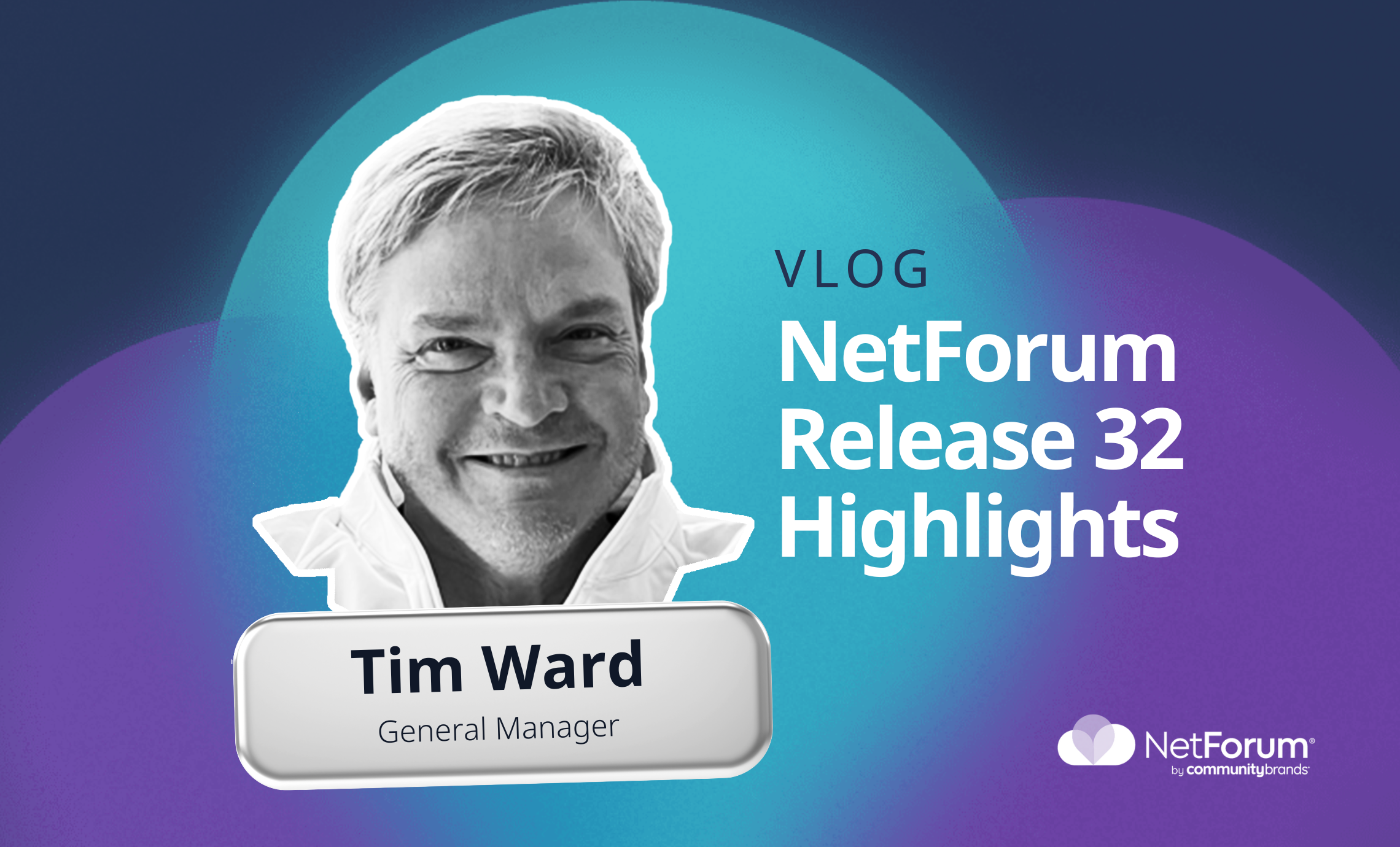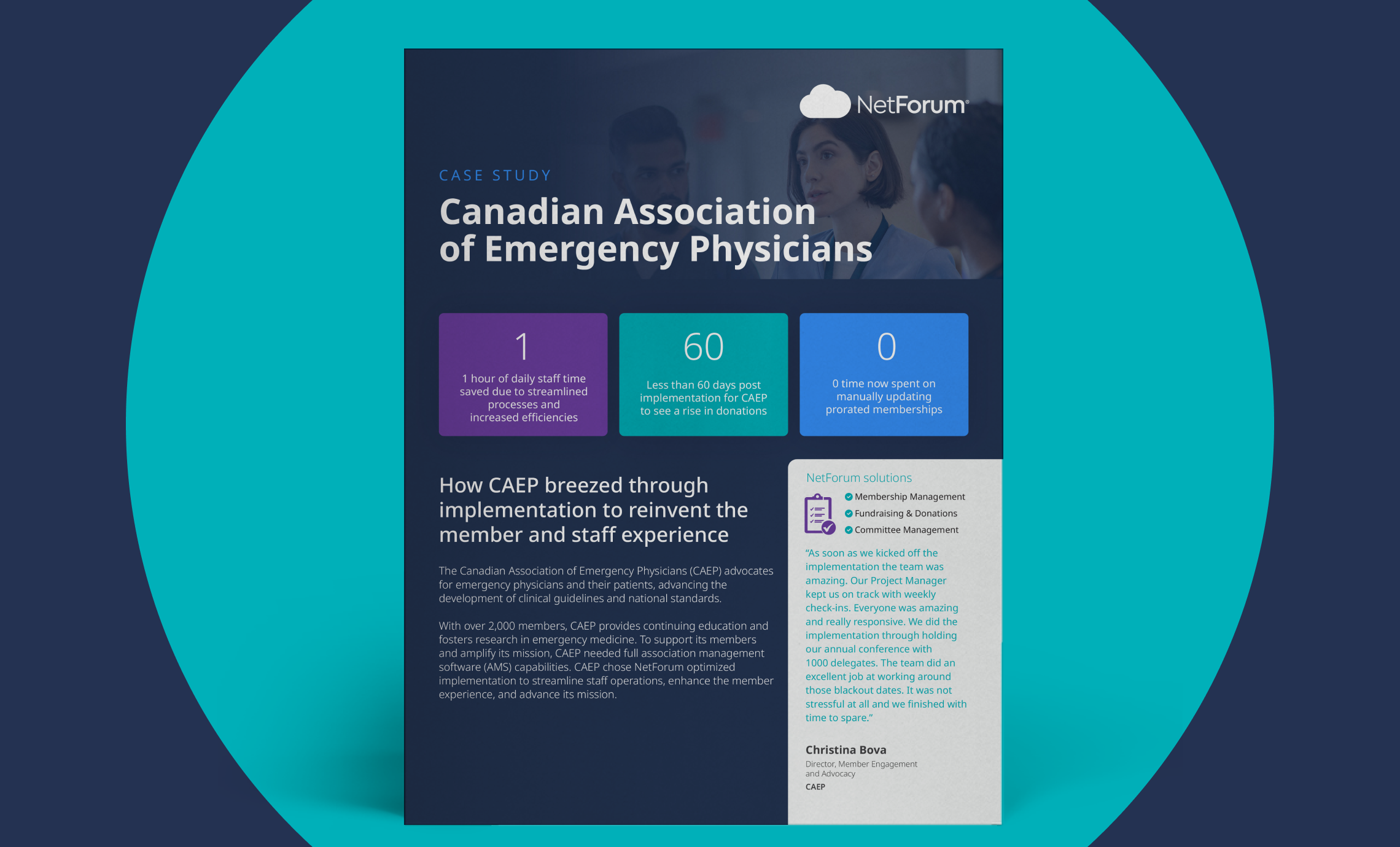How to get buy-in when people don’t understand the challenges with your existing membership technology.
You know it’s time to select and implement new association management software (AMS). Your current software might be outdated. Perhaps it’s not keeping up as your organization grows and evolves. Perhaps it doesn’t include modern analytics. You need a modern AMS system that can help you manage and interpret all your member data in one central location – especially in times like these that require quick, well-informed, data-based decisions so you can make strategy shifts to keep pace with our changing world.
You might have even begun to do research and ask AMS vendors about their products. But here’s the next step: Not everyone at your organization understands the challenges with your existing technology or sees the value a new solution could provide.
It’s time to build the case for a new AMS system! Here are some tips for persuading your organization to consider new software:
- Examine the history of your AMS. Take some time to understand the history behind your existing system:
-
- Has your vendor shown innovation and added functionality?
- Have the system’s capabilities increased over time?
- Has your association taken advantage of all available upgrades? If not, why?
- Have any customizations (or fixes) been done since implementation? If so, why and by whom?
- Has your organization outgrown your current solution?
- Does your staff have to execute on a lot of manual processes?
Also, assess your relationship with your current vendor:
-
- Are you receiving the level of support you desire?
- How responsive are they to requests for bug fixes or new functionality?
- Are they providing sufficient training for users? For example, do they have a user conference, user group and online resources?
And finally, evaluate whether the system has evolved with your association’s changing needs. Where is it falling short?
- Study your software’s impact on association staff.
Now that you have a sense of the system’s past, dig into the present by talking to your staff who uses the system:
-
- How does your existing technology hinder your association from achieving strategic goals?
- What regularly causes frustration when using the system?
- What do you and your colleagues wish the system could do, but doesn’t?
- What actions can’t you take because of the system’s limitations?
- What questions do you have about members, prospects and donors that can’t be answered due to the system’s limitations?
- What processes would you like to automate or streamline?
- What reports would you find useful?
- How could technology free up time so you can spend more time on more useful work?
When presenting your business case, numbers will make an impact. Ask staff to translate their experiences into data you can share. For example:
-
- How much extra time does it take to run a process because of system limitations? How many times does this happen per week/month?
- How many errors are made per week/month due to system issues? How much time does it take to fix those errors?
- Assess inefficiencies and problems caused by your software.
You’re more likely to win support if you document system issues and add scenarios that illustrate issues in these areas:
-
- Efficiency/productivity
- Data integrity issues
- Reporting limitations
- Integration issues
- Impact on staff morale
- System adoption rate
- Risks
-
- Data security issues (including whether your Cloud platform has state-of-the-art security)
- Compliance issues (including whether your Cloud platform maintains compliance)
- Financial costs
-
- Lost staff time translated into dollars and budget percentages
- Money spent on fixes, workarounds and issues related to the system’s age and/or limitations
- Overtime or temporary staff costs for data entry or other tasks
- Value delivery
-
- Unknowns due to incomplete data or reporting limitations
- Decisions not made or made with insufficient information
- Projects put off or done less well because of system limitations/limited functionality
- Opportunities missed
- Future readiness
-
- Is your current AMS housed on a Cloud platform that will meet needs going forward?
- Existing technology’s impact on ability to attract staff talent
- Ability to respond to new market needs
- Competitive posture
TIP: Having disjointed data in multiple systems across your organization can lead to outdated data, reporting breakdowns, and inconsistent decision-making. Be sure to point out these potential problems that can be caused by data silos (and fixed with the right AMS system).
- Provide examples about the system’s shortcomings.
Document the product’s shortcomings in the following areas, and back up your argument with supporting data:
-
- Life expectancy – Point out the following aspects concerning the life expectancy of your current software:
-
-
- Technology: Is there risk of your solution becoming obsolete (example – not built with evergreen technology such as Microsoft or Salesforce)?
- Members: Point out if members have threatened to leave if you don’t fix certain issues or offer particular services, and mention that there may be others who have the same issue but remained silent as they shop around for another organization to join.
- Cost: Quantify how much it’s costing to keep your current systems and software in working order. Point out that an all-in-one AMS solution will help decrease software costs and reduce using multiple vendors.
- Technology: Is there risk of your solution becoming obsolete (example – not built with evergreen technology such as Microsoft or Salesforce)?
-
-
- Functional requirements – Add context to your list of functional requirements, explaining why those features are needed. For example, for each feature, assign which task it will help complete. Add details about how the task is currently being completed. Estimate the time to complete the task now versus how long it would take with a new system.
- The cost barrier – Even though you’ve demonstrated how a new system will make your organization more efficient and can point out ways in which you’ll be better serving your members, be prepared to hear phrases like “this isn’t in the budget” or “this isn’t the right time”. Combat this type of thinking with your research and efficiency calculations to create the most compelling case for new software.
- Functional requirements – Add context to your list of functional requirements, explaining why those features are needed. For example, for each feature, assign which task it will help complete. Add details about how the task is currently being completed. Estimate the time to complete the task now versus how long it would take with a new system.
- Build a convincing business case for new software.
After you’ve gathered all the information you need, it’s time to build your business case for new software. Describe the risks and challenges for staying with the status quo, including the impact on staff productivity (and, therefore, the budget), technical inefficiencies and risks, missed opportunities, and limitations the existing software imposes on your association’s ability to deliver value to members and achieve its goals. Also, be sure to paint a compelling picture of how new software can help combat the issues you’ve outlined. For example, NetForum Enterprise by Community Brands is industry-leading membership management software that helps large associations manage their associations efficiently and optimize every stage of the member journey. NetForum Enterprise customers now also have state of the art analytics capabilities through Nucleus, the first data analytics solution developed specifically for associations. Nucleus is also a Community Brands product, and works with NetForum Enterprise to provide association staff, leadership, chapters, members, and boards with the insights they need to make more informed decisions.Some tips:
-
- Speak to the concerns of decision-makers. For example, the board of directors may want to know how this change will impact the bottom line. Others on the executive team may be more interested in how new software will help increase member engagement or improve decision-making.
- Let the decision-makers know whom you consulted to prepare your presentation. Identify the members of the selection team and describe the vendor selection process and the criteria the team will use to decide.
- Discuss the budget in the context of the expected return on investment. Reference the data you’ve collected in the appendix of your business case to back up your argument.
- Speak to the concerns of decision-makers. For example, the board of directors may want to know how this change will impact the bottom line. Others on the executive team may be more interested in how new software will help increase member engagement or improve decision-making.
-
- Discuss the timeline and basic implementation plan, including your change management strategy and the project’s impact on operations
Learn more
For more tips on choosing the right AMS for your association, download the Association Management Software Buyer’s Guide.


